Low-impact water supply - introduction
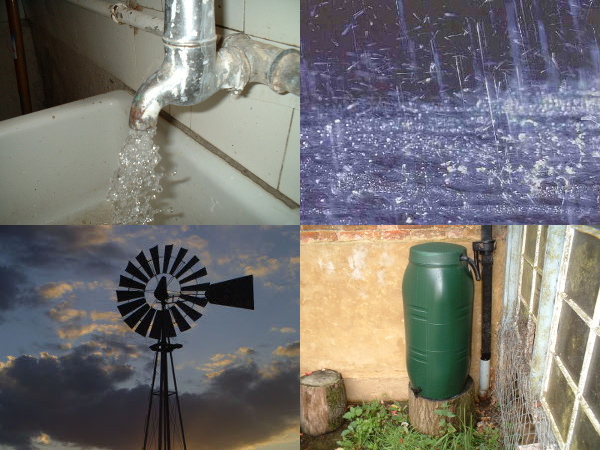
“When the well is dry, we learn the worth of water.” – Benjamin Franklin
Contents
What is low-impact water supply?
Over 70% of the Earth’s surface is covered with water. From space we are the Blue Planet. However, only 2.5% of this is fresh water, and two thirds of that is locked up in glaciers and ice caps. The remaining third (c. 0.8% of all water) is distributed between lakes, wetlands, groundwater, rivers, soil moisture and atmospheric water. That’s too precious to be throwing away to pollution, habitat encroachment and climate change pressures.
Water supply is something that we take completely for granted on these wet islands off the west coast of Europe. Most of our tap water is pumped from groundwater, rivers or lakes and is filtered and sterilised to remove contaminants (mostly from sewage and agriculture) and sometimes medicated with fluoride (causing great debate as to its benefits and drawbacks). Then it is pumped and stored for delivery to our homes. This process is carried out daily by local authorities across the UK, and yet we seldom give it much thought.

Our home planet is a watery, blue one.
A more ecologically sustainable water supply would be one that starts with clean water, so avoiding additional chemicals for sterilisation or medication, and relying only on gravity to deliver the water to our homes. However, the management of our municipal water supplies and the health of the wider catchment area, the landscape on which our rain falls and through which our water flows, is beyond the direct control of most of us. Thus later in this topic intro are more modest contributions that we can make towards catchment protection and diversification of our own private water supplies.
What are the benefits of low-impact water supply?
Availability of clean water is one of the essential requirements for a healthy life. We use it in our home for drinking, cooking and cleaning; in our farms for irrigation and for livestock; in our industry for cooling, cleaning and production processes. It’s the lifeblood of our countryside and all of the habitats we know and love.
We too are mainly water, to the tune of about 60%. This simple molecule H2O – two hydrogen atoms for each oxygen atom – provides us with the basis of all life on Earth. Everything that lives and breathes relies upon water for its existence.

The bed of a stream seen through crystal clear water; clean water is essential for life. (Source: FH Wetland Systems)
In recent years and decades we have seen water shortages due to droughts, deterioration of water storage within our catchments, contamination and deterioration of the water quality in our groundwaters, rivers and lakes. Paradoxically, storms also bring water shortages from time to time because of our dependence on electricity for pumping water to our municipal treatment systems and/or our homes.
There are many varied benefits from moving towards a lower-impact water supply. The benefit of diversifying our water supply is that we can build greater resilience into our lifestyles; the benefit of adopting water conservation measures (and diversification of supply) is that we reduce the total demand for pumping and chemicals at the municipal level; the benefit of protecting our local catchments from pollution and hydrological extremes is that we can all have cleaner, healthier water to drink; and the benefit of reducing our water footprint is greater health and wellbeing of those who live far removed from us and yet are affected by our lifestyles and purchasing habits.

Wetlands and woodlands filter and store water within our river catchments. We need these areas to protect against flooding and droughts. (Source: FH Wetland Systems)
What can I do?
There is plenty that we can do to help protect clean water, diversify our supplies, conserve water and to reduce our global water footprint.
When rain falls on the land, water is filtered and stored in the soil, particularly healthy humus-rich soils and in woodlands and wetlands. To protect the quality and reliability of our water supplies and habitats we can support organisations that encourage tree planting in our uplands, preservation of our wetlands and promotion of agricultural practices that encourage good soil health. Even something as straightforward as composting in our back gardens builds humic material in our soils and helps to provide greater water storage in our soils.
On an individual house basis, we can create rain-gardens or mini SUDS units to contain heavy rainfall from our roof surfaces or driveways and gradually reintroduce this water back into the ground via percolation from the system base. This reduces the pressure on mains drainage networks and protects rivers and streams from hydraulic shock loading, flood/drought cycles and pollution. If we farm or manage land, then we can introduce woodlands, hedgerows, wetlands or ponds within the catchment to contain heavy rainfall and release it slowly back into the wider groundwater or river system, filtering it as it goes. We can compost and practice regenerative agriculture to build our soil humus content and thus provide additional catchment storage and water filtration.

Example of a small rain garden / SUDS system.(source: Susdrain)
Get involved in a local Rivers Trust to ensure that your local catchment area is being cared for, to keep your drinking water clean and healthy. It’s also important to ensure that your own sewage system is working well so that you are protecting the underlying groundwater.
When it comes to our own water supply, we can explore ways to diversify our sources to have greater resilience in an uncertain future. One of the principles of permaculture reads: “each important function is supported by many elements”. Well, access to clean water is certainly one of the mort important ‘functions’ in our homes. It often goes unnoticed because, like clean air to breathe, we take it so completely for granted. However without a ready supply of electricity to filter out contaminants from sewage and agriculture, our water supplies can become unsafe to drink. Without electricity to pump it, our taps quickly run dry. This ‘important function’ suddenly becomes horribly noticeable only by its absence.
The image below shows a variety of water supply sources; conventional and alternative. By diversifying our water supply we can build resilience into the design of our homes and lifestyles. Council mains supply, group scheme supply and private wells on site are all relatively common water sources. These all typically require pumping to deliver water to our taps, and often require extensive filtration and sterilisation in order to remove contaminants.

Diversification of water supply sources. (Source: FH Wetland Systems)
Although surface water abstraction from rivers or lakes is a relatively common method of water supply on a municipal scale, it is much less common for individual homes. If you are fortunate enough to live in an area with a clean river or stream running close to the house, this method may be ideal, but you can by no means take for granted that the supply will be clean or safe to drink. Used with a biosand filter however, it may be possible to safely provide your primary supply or even a backup in the event of an interruption to your existing source. Ideally set up your system to run using gravity rather than needing to be pumped.
Rain harvesting is another water supply method that is growing in popularity. The three main elements to any rain harvesting system are the catchment (your roof), supply (the gutter system) and storage (tank or chamber). If these are all carefully designed you can safely capture and use harvested rain water to augment or replace your mains supply. Filtration may be required if you want to use rainwater as a drinking water source. Note that rainwater hasn’t had the benefit of contact with the earth, filtering through the soil and picking up minerals from the bedrock, so it may not be as healthy a source of drinking water for ongoing use, so research this further if you want to use it as your only supply (see here and here).

Basic diagram of a biosand filter.
If you have clean water below ground or in a local river or stream, but not the falls to obtain it by gravity there are a number of low-impact pumping options. One is a wind pump, which can be used for groundwater or surface water access. Another is a ram pump, for use with rivers or streams where the flowing water provides the energy to pump a small volume of water to a header tank.
I’ve not even considered bottled water as a water source, although many people clearly do. Imported bottled water has a carbon footprint of about 300 times that of tap water, and c.14 billion recyclable plastic bottles end up in landfill every year in the UK, so bottled water won’t win the low-impact prize. Better to keep our landscape healthy and produce healthy drinking water than to stock up on bottles which are often simply bottled tap water anyway, or at worst they may be sourced from water-stressed regions which need to keep their groundwater in the ground rather than exporting it at great profit to just one private company.

Water sources that don’t need electricity to pump: hand-drawn groundwater abstraction; gravity-fed or hand-drawn surface water abstraction; rain.
Storage on-site is listed in the water sources image above, in order to identify this as a possible backup for use during power shortages. Storage may best be achieved in an additional cistern if you experience regular short-term power supply interruptions. Alternatively, having an outside tank or garden pond to act as a reservoir may provide useful storage for occasional use. A few years ago we had a big freeze and our household mains supply was down for about a week. At the time we turned to the four large water tanks used for storing rain water for our polytunnel. These thawed faster than the council mains supply and we were able to boil the water for drinking and washing – and were very glad to have this diversity of water sources at the time.
Conservation of water is another heading that isn’t strictly a water supply source, and yet in many respects if we can be frugal with our water use, we can reduce our ecological footprint by cutting back on council electricity use for pumping and abstraction from our local waterways. There are many simple ways to conserve water, such as using low-water-use taps and washing machines, summer watering of the garden with washing-up water, turning off the tap when brushing your teeth etc. We can install low-flush toilets or waterless urinals to further reduce our water consumption (or for source separation of urine to use as a fertiliser rather than adding to the nutrient loading on our local municipal treatment system. Grey water recycling is another option, but personally I’m a fan of using rainwater in preference to filtered grey water because it typically involves less energy and we already have an abundance of rain.
While water (and electricity) is so abundant it can be difficult to see the justification for water conservation – however as our weather patterns become more extreme, some people are being faced with lugging water from central depots – even if only on an occasional basis. Conservation of water supplies suddenly becomes important when each litre is carried by hand in a Jerrycan.

Two types of pump that don’t need electricity: wind pump and hydraulic ram pump.
However, in general terms domestic use accounts for a relatively small amount of our water footprint – which is the amount of water used to produce the goods and services that we buy. This extends well beyond our shores. A quarter of the world’s agricultural land is in areas that are already water-stressed, and these areas are spreading as climate change takes its toll. In Europe, some 40% of our water footprint is generated abroad in the form of imports, often from very water-stressed regions. When we buy almonds, avocados, pistachios, wine and cotton we often put additional pressure on areas that are already suffering from drought conditions. Beef raised in water-stressed areas is worse again, so if buying beef, be sure to buy only local beef, where we have the rainfall to meet the demand.
In light of this, be sure to consider water-stressed areas in your shopping habits and endeavour to stop buying water-intensive crops or products from such regions of the globe. This is another good reason to buy local and grow our own food.
Specialist(s)
Thanks to Feidhlim Harty of FH Wetland Systems for information and pics.
The specialist(s) below will respond to queries on this topic. Please comment in the box at the bottom of the page.

Féidhlim Harty is an environmental consultant and writer, and director of FH Wetland Systems Ltd., a company specialising in wetland and reed bed design, willow systems and habitat enhancement. He is the author of Septic Tank Options & Alternatives and Permaculture Guide to Reed Beds, both published by Permanent Publications.

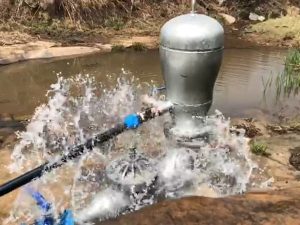
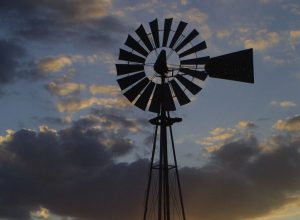
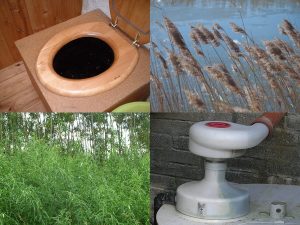
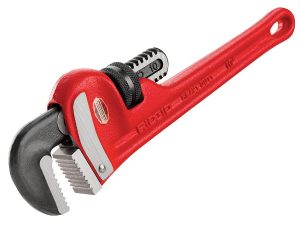
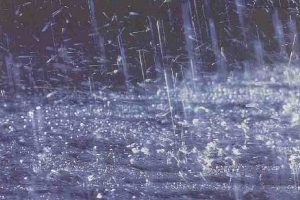
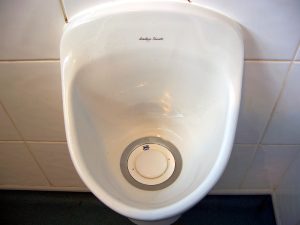
10 Comments
Our village owned charitable woodland group look likely to be forced to use gazelle (neonicotinoid pesticide) dipped trees when they replant the woodland on the hillside above our property, about 40 households will be directly affected. Additionally the small trees will almost certainly have to be resprayed later.
All our domestic water and that of the other 40 odd households, comes off this hillside catchment area via small burns (streams) and we are now very concerned about their welfare and the runoff contamination consequences to all wildlife and our own well being.
Despite there being little hard evidence on safety levels of this pesticide our gut feeling is that we must look at alternative water supplies.
We have very high rainfall throughout the year on the Isle of Mull, with small dry spells in spring and mid summer.
We already process our stream water with a filter and UV system and I’m therefore thinking that I could harvest rainwater using storage to overcome the small spring/summer dry spells. I could run new supplies to the toilet, w/m and dishwasher to leave these on the old system if that proved practical/safe. We have an area under the bungalow where we could site IBC Container storage and I’m a retired plumber therefore there is nothing about the practicalities that will phase me.
Of course there may be a change in legislation or they may not force our voluntary community group down this path but again my gut instinct is that these things will not change and I’m better off hoping for the best but planning for the worst.
I would therefore welcome your advise and input on our changing situation and the practicalities of rainwater harvest for potable water.
Hi Johnoil, As the author of this topic intro, Dave (of Low Impact) has asked me to respond to your query. Here are some brief thoughts on your predicament.
According to the certiseurope form for Gazelle, this pesticide is designed for, inter alia, edible food crops: up to 14 days before harvest of apples, pears, plums and cherries, and as little as 3 days before harvest of tomatoes, peppers and aubergines (Gazelle SG(R) MAPP 13725). The certiseurope sheet describes it as being “harmful if swallowed” and “very toxic to aquatic life with long lasting effects”. The application interval is 20 days for most applications described. Elsewhere, the “half-life of neonicotinoids in soils can exceed 1000 days” (Bonmatin et al, Environmental fate and exposure; neonicotinoids and fipronil. Environmental Science and Pollution Research International 2015; 22: 35-67. https://www.ncbi.nlm.nih.gov/pmc/articles/PMC4284396/), and “..they can persist in woody plants for periods exceeding 1 year”. However, “they can bind to soil particles and this reduces their potential to be leached through the soil profile” (Bonmatin et al.).
The above information (from only two sources – not an extensive literature review!) would lead me to conclude that if you are using neonicotinoid-dipped trees within your water source catchment, you won’t be alone in having these pesticides present in your environment. Also, if you buy non-organic veg then the likelihood of having recent neonicotinoid application on your food is very high. Clearly it’s not ideal, but if it is a once off (and if you can manage to keep the trees cleared by hand such that spraying is deemed to be unnecessary by the contractors) then perhaps you can reduce the presence of toxins within your catchment area.
Do you know if the water flows directly off the soil, or if there is infiltration into the soil and then re-emergence into the stream? The latter would provide greater filtration through the soil. In general terms if we can allow rainfall to land on the soil, soak into the ground, then re-emerge in its own time in springs and streams it is healthier than simply catching rain water for drinking (according to work by Austrian scientist Viktor Schauberger).
Is there local enthusiasm for keeping trees clear by hand to avoid future spray operations? Also, would there be opportunities to enhance the catchment to provide greater storage of water in the catchment to get you through the dry spells? Planting trees would presumably help to balance the water flows from the catchment so that water will be more reliably present throughout the year. Also, introduction of brash-dams in the streams or introduction of in-stream wetlands or ponds would also help.
If you can tackle this on a catchment-wide basis that would have benefits for all 40 houses on the system, rather than addressing it on a single house basis.
Let me know if you have any questions or comments on any of the above. I can help with in-catchment filter and attenuation systems if needed.
It’s easy enough to collect rainwater in a water butt or tank, done that. But how to get it to the upstairs toilet without paying a small fortune for a pressure operated pump. Any suggestions gratefully received (I tried carrying a bucket but I soon got bored with that)
Thanks
It’s not something I’ve done. My water butts are raised on pallets and my house is single storey (so I’ve no excuse for not having plumbed the two together!) We have used the rainwater as a backup system for very cold freezes because our mains supply freezes quicker than the butts. The only real thought that comes to mind for your query is to use a small rooftop solar PV array with a small-bore pipe to deliver water to a header tank. Other than that I’d look at storing rain water on a raised platform and routing it to a downstairs toilet for most of your use and keep the upstairs toilet for council mains for occasional use only. Hope that helps.
Neither A 15ft pile of pallets with 4 water butts on top, nor building a new downstairs toilet are practical solutions.
I wondered about using a small water motor on the mains feed to the cistern, to power a pump from the water butt to fill the same cistern. The cistern would then be full with a mix of mains and rain water, hopefully half and half.
Surely this must be a common issue, I’m surprised there are no tried and tested ideas
We are completely off grid and use a pressure pump to push the water from our rain water tanks to feed not only the cold system but to lift the water to our solar water heater. This pump has little impact on our electrical supply ( also solar ). It’s a simple but effective solution.
Hi ..I’m after advice about the wind power for pulling water up a bore hole ..mine is being dug at the moment to a depth of 15m..please advice or could you put me in touch with someone who knows ..
Manh thanks
SuBear
SuBear. I’ll see if Feidhlim knows more about this, but there’s info / contacts here for wind pumping – https://www.lowimpact.org/lowimpact-topic/wind-pumps/
Hi SuBear, pump capacities and wind pumps are outside of my area of expertise I’m afraid. Can you look for wind pump suppliers online and see if they would be able to provide you with some direction? All the best with it.
Hello
PLease can you contact us to provide a water filtration consultancy quote?
Many thanks